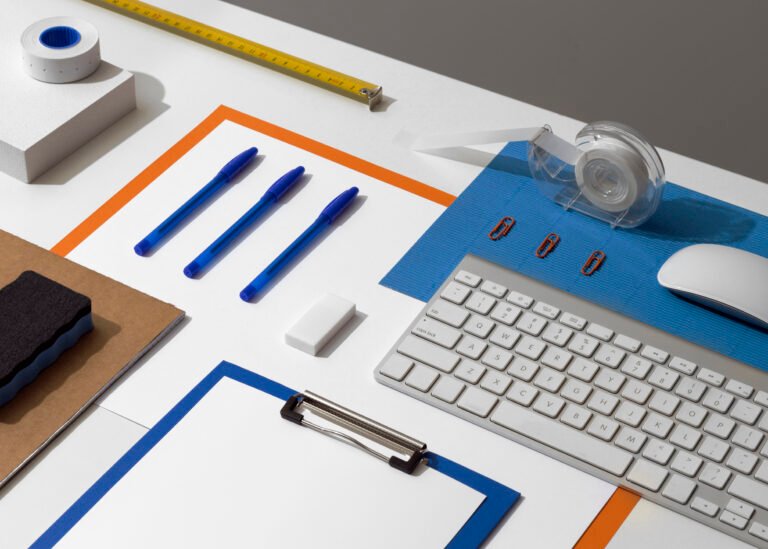If you want to move up the ladder, change careers, or stay relevant in a fast-moving field, the first step is honest — find where your skills fall short. That’s exactly what a Skill Gap Finder helps you do. In this long, practical guide you’ll get a repeatable Skill Gap Finder system with technical templates, step-by-step actions, and resource suggestions (online course bundles, Amazon gift cards, study lamps, noise-canceling headphones, whiteboards, sticky notes, time-blocking planners and companion workbooks) so you can identify gaps and close them efficiently.
Table of Contents
1. Why use a Skill Gap Finder (and what it tells you)
A Skill Gap Finder is not an academic exercise. It’s a pragmatic tool that surfaces:
- Which skills are essential for your target role (required skills).
- Your current competence on each skill (current skills).
- The measurable difference between required and current levels (the gap).
- The order you should learn those skills to maximize impact.
When done properly, the Skill Gap Finder gives you a prioritized, time-bound learning plan rather than a vague “learn more” resolution.
2. The 7-step Skill Gap Finder process (practical)
Below is a concise, repeatable 7-step process you can perform in a few hours and iterate monthly.
Step 1 — Define your target role and outcomes
Be specific. “Senior Data Engineer at mid-size fintech” beats “get better at data.” Document responsibilities, KPIs, and tools used.
Step 2 — Build the required-skill list
Collect job descriptions, LinkedIn role listings, and conversations with people in the role. Create a master list of required skills (technical + soft).
Step 3 — Create a skills inventory (self + evidence)
For each skill, record your self-rated level (1–5), recent evidence (projects, certifications, code samples), and last practiced date.
Step 4 — Score the gaps (quantitative)
Apply a Gap Score formula (see section 4). You’ll get a numeric ranking to compare skills objectively.
Step 5 — Prioritize using impact vs. effort
Plot each skill on an Impact (high/low) vs Effort (high/low) matrix. Focus first on “High Impact / Low Effort” items.
Step 6 — Create targeted learning sprints
For each prioritized skill, design 2–4 week micro-sprints with clear deliverables (complete a course module, publish a portofolio piece, automate a task).
Step 7 — Track, measure, and iterate
Measure progress weekly using demonstrable outputs. After each sprint, rerun the Skill Gap Finder to update scores.
Use this loop: Discover → Prioritize → Learn → Validate → Repeat.
3. Building your skills inventory (template + example)
A clean skills inventory makes everything measurable. Here’s a simple template you can build in a spreadsheet:
| Skill | Required Level (1–5) | Current Level (1–5) | Gap (Req−Curr) | Last Practiced | Evidence | Notes |
| SQL (complex queries) | 5 | 3 | 2 | 2025-06-14 | Project: ETL script | Focus on window functions |
| System Design | 4 | 2 | 2 | 2024-11-02 | None | Read 2 case studies |
Example entry explained: Required Level is the competence level needed for your target role on a scale of 1 (basic) to 5 (expert). Current Level is your honest rating. Gap = Required − Current. Sort by Gap descending or by Gap × Impact (see scoring below).
4. Scoring gaps: a simple, defensible formula
To turn qualitative observations into a ranked list, use a gap scoring model. Be explicit and repeatable.
Basic Gap Score formula
Gap Score = (Required Level − Current Level)
Range: −4 to +4 (we focus on positive gaps). But not all gaps are equally important.
Weighted Gap Score (recommended)
Weighted Gap Score = Gap × Impact Weight × Role Urgency
- Gap = Required − Current (1–4)
- Impact Weight = 1 (low), 2 (medium), 3 (high)
- Role Urgency = 1 (nice-to-have), 1.5 (required soon), 2 (critical now)
Example calculation (digit-by-digit):
If Required=5 and Current=3, Gap = 5 − 3 = 2. If Impact Weight=3 and Role Urgency=2 then Weighted Gap Score = 2 × 3 × 2 = 12.
This produces a single number you can sort across skills to produce a priority list. Save the formula in your spreadsheet and freeze columns for visual clarity.
5. Prioritizing gaps: impact vs. effort matrix
Numbers get you the ranked list; a matrix helps you decide what to do first.
- High Impact / Low Effort (Quick Wins): Do these first. Example: polishing Git workflows.
- High Impact / High Effort: Plan sprints with milestones. Example: learning cloud architecture.
- Low Impact / Low Effort: Batch them into low-priority learning.
- Low Impact / High Effort: Consider whether they’re worth the investment.
Create a 2×2 grid and place each skill. Then pick three skills from the High Impact / Low Effort + top High Impact / High Effort items for your first 90 days.
6. Resources that accelerate closing gaps (Skill Gap Finder kit)
Below is a related-items table that lists the product types you mentioned and how they help. You can add links later — the article will remain complete without them.
| Product type | Why it helps | How to use it |
| Online course bundles / Amazon gift cards for courses | Access curated, structured learning | Buy a course bundle to follow a syllabus and get certificates |
| Notebooks & course companion workbooks | Externalize learning, practice problems | Use for active recall and spaced repetition |
| Study lamp / ring light | Improve focus and video-call presence | Use for evening study sessions and live tutoring |
| Noise-canceling headphones | Block distractions for deep work | Use during Pomodoro sprints and coding sessions |
| Whiteboard & markers | Visual mapping, system design sketches | Draft system designs, process flows, and interview prep |
| Sticky notes | Micro-reminders and quick planning | Break tasks into 25–45 minute actions and post them visibly |
| Time-blocking planner | Schedule learning and measure time spent | Plan sprints, track study hours, and review weekly |
These items are optional; the core of a Skill Gap Finder is the process. Physical tools accelerate focus and retention.
7. Creating a learning sprint and tracking progress
A sprint is a short, focused learning period — usually 2–4 weeks.
Sprint template (2-week example)
- Goal: Close SQL gap from level 3 to level 4.
- Deliverables: Complete 4 course modules, build 3 query solutions, submit to GitHub.
- Daily routine: 60 minutes focused learning + 30 minutes practice or project.
- Measurement: Before/after timed assessment and GitHub commit count.
Tracking metrics
- Time invested (hours/week) — tracked in time-blocking planner.
- Deliverables completed — module completion, assignments.
- Validation score — a small test or peer review to quantify improvement.
- Retention check — re-test after 2 weeks to ensure learning sticks.
Use a simple dashboard in a spreadsheet: Skill | Sprint | Hours | Completed | Validation Score.
8. Real-world examples & mini case studies
Case A: Marketing manager → Growth lead
Problem: Lacked SQL and A/B testing skills (Gap 3).
Action: 6-week Skill Gap Finder sprints focusing on analytics tools, paired with a course bundle. Used noise-canceling headphones for focused practice and a whiteboard to map experimentation flows. Outcome: Delivered 3 A/B tests in quarter and promoted.
Case B: Software engineer → Staff engineer
Problem: System design and stakeholder influence gaps.
Action: Prioritized system design (High Impact / High Effort). Used whiteboard sessions and technical books as core resources, plus a mentor review. Outcome: Improved interview performance and led a microservice migration.
These mini-cases show how the Skill Gap Finder turns vague goals into measurable outcomes.
9. Common mistakes and how to avoid them
- Mistake 1 – Being too general: “Get better at dev.” Fix: specify the role and list the exact skills.
- Mistake 2 – Overloading the backlog: Trying to learn ten big skills at once. Fix: focus on 2–3 sprints.
- Mistake 3 – No evidence of competence: Reading without doing projects. Fix: require one demonstrable output per sprint.
- Mistake 4 – Ignoring soft skills: Communication and stakeholder management are often high-impact. Fix: include them in your Skill Gap Finder.
- Mistake 5 – Not iterating: Skills change; rerun the Skill Gap Finder every 8–12 weeks.
10. Tools and templates: quick downloads you can build today
You don’t need fancy software. Here are minimal tools to implement the Skill Gap Finder immediately:
- Skills spreadsheet: Columns = Skill | Required | Current | Gap | Impact | Urgency | Weighted Score | Sprint Assigned.
- Sprint checklist: Daily activity log, week goals, deliverables, test.
- Validation form: 5-question rubric for peer reviewers (completeness, clarity, correctness, reuse, extra).
- Kanban board: To move skills through To Learn → Learning → Validated → Mastered.
If you want, I can produce spreadsheet templates or a printable time-blocking planner next.
11. FAQs about Skill Gap Finder
Q1: How often should I run a Skill Gap Finder?
Run a lightweight version every 8–12 weeks and a deep-dive whenever you have a major career move planned.
Q2: Can I do this alone or do I need a mentor?
Both: you can do a Skill Gap Finder solo, but mentors/peers speed validation and provide external evidence.
Q3: How long until I see results?
Depends on the skill. Quick wins (2–6 weeks). Deep skills (3–9 months). The Skill Gap Finder gives timelines per skill.
Q4: How do I handle very high-effort skills?
Break them into sub-skills and run multiple sprints. Use Impact × Urgency to decide which sub-skills to prioritize first.
Q5: Should I pay for courses or use free resources?
Both work. Paid course bundles often offer structure and accountability. Free resources are flexible but need more self-discipline.
Q6: How do I prove improvement to an employer?
Deliver evidence: GitHub repos, case studies, performance metrics, peer reviews, short recorded demos, or course certificates.
Q7: Are soft skills part of the Skill Gap Finder?
Yes. Rate, score, and create practical sprints (for example: lead a 4-week cross-functional mini-project to improve stakeholder communication).
12. Conclusion — make your Skill Gap Finder a habit
A Skill Gap Finder is the bridge between where you are and where you want to be. The process makes your learning measurable, prioritized, and time-boxed. Use the 7-step process, the scoring model, and the sprint templates here to turn gaps into growth.






